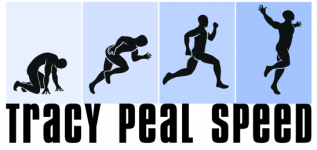Ask The Trainer
For the past year or so, I’ve been working closely with my friend and colleague Dr. Lee Cohen (www.drleecohen.com). Dr. Cohen is the podiatric consultant for the Philadelphia Eagles, 76ers, Wings and a host of collegiate and high school teams. I met him through the usual “know somebody” network, and he was gracious enough to let me sit-in on his patient consultations. By hanging around once a week, I was able to increase my knowledge of postural structure, foot mechanics and gait analysis – and improve my diagnosis and corrections of running-related injuries. Collaborating with Dr. Cohen, however, took some time to cultivate. Solving structural issues by alignment alone had been a successful approach for him, though there seemed to remain 15-20% of his patients (mostly involved with athletic activity) that continued to suffer problems. I was stubborn in my insistence that there needed to be another side to the treatment protocol for his patients and athletes: help them move better. Ironically, it wasn’t until Dr. Cohen and I taped a video together that he was “sold” on my ability to provide an alternative method to refining stride mechanics. He heard me run! Or actually, he didn’t hear me run. Surprised by the quiet lightness of my stride, Dr. Cohen then understood how my knowledge could augment his practice. Ever since, we’ve been tackling many issues in tandem. Now, I’m a permanent fixture at his various offices and on his website.
Each week, I answer one of the many questions proposed by his patients. Below are the first three installments. For future updates, please click on the “Patient Education” link and find the Ask The Trainer section.
I am a runner with flat feet and I suffer regularly from overuse injuries to my foot, ankle, and knee, what is my problem and how can I run without pain?
A common cause of chronic pain and overuse injury of this type is a mechanical problem called over pronation of the foot. Normal pronation occurs when the foot rolls inward and the arch of the foot flattens. In a runner with flat feet or other issues the foot will often hyper-pronate, or roll too far inwards. This will throw off the balance of the foot and leg and can cause shin splints, runner’s knee, bunions, tarsal tunnel syndrome and more. Often the pain can be avoided with motion control running shoes and custom insoles, but many experts maintain that while this method gets rid of the pain, poor mechanics still inhibit the runner’s full potential. To fix this problem many athletes turn to elite running coaches and movement specialists. At Tracy Peal Speed, we advocate a cutting edge running technique called the Pose method. The Pose method is proven to reduce shock on the knee as well as preventing injury. These results are achieved by keeping the body well positioned over its general center of mass so as to work with gravity rather than against it. To learn more please contact us.
What are some pros and cons of barefoot running and how can I learn more about the technique?
It seems reasonable that shoes, especially running shoes, would represent the most technologically advanced approach to enhancing human locomotion mechanics – but this is not the case. Barefoot running enthusiasts point out that shoes alter natural foot placement, moving impact from the forefoot and balls of the feet to the heel by adding cushioning and mechanical support. In their opinion, this causes the small muscles of the foot and leg to become underdeveloped through disuse. Advocates of barefoot running also suggest that this method can help strengthen these muscles to increase performance and prevent injury.
While barefoot running may improve health, combining performance, efficiency and injury prevention involves more complexity than simply removing ones shoes and running. For this reason a competent running coach or movement specialist should assist and advise any athlete who is interested in barefoot running. For an introduction to barefoot running and a sample drill check out this video.
How should a long distance runner approach rehabilitation of a knee injury so as to return to training as quickly as possible?
It is important to remember that with any injury, especially a knee injury, the injured part of the body is far from the only area affected. Muscles that have been unused during the rehabilitative process may have weakened, so it’s imperative to minimize effort and stress on the knee when returning to running. Jumping back into training without the proper attention can lead to an overuse issue or a recurrence of the previous injury. For this reason we emphasize Gait Retraining, in addition to normal strengthening and flexibility routines. This approach is essential to providing the proprioceptive feedback an athlete needs to stride efficiently, regain strength and return balance to the leg.







